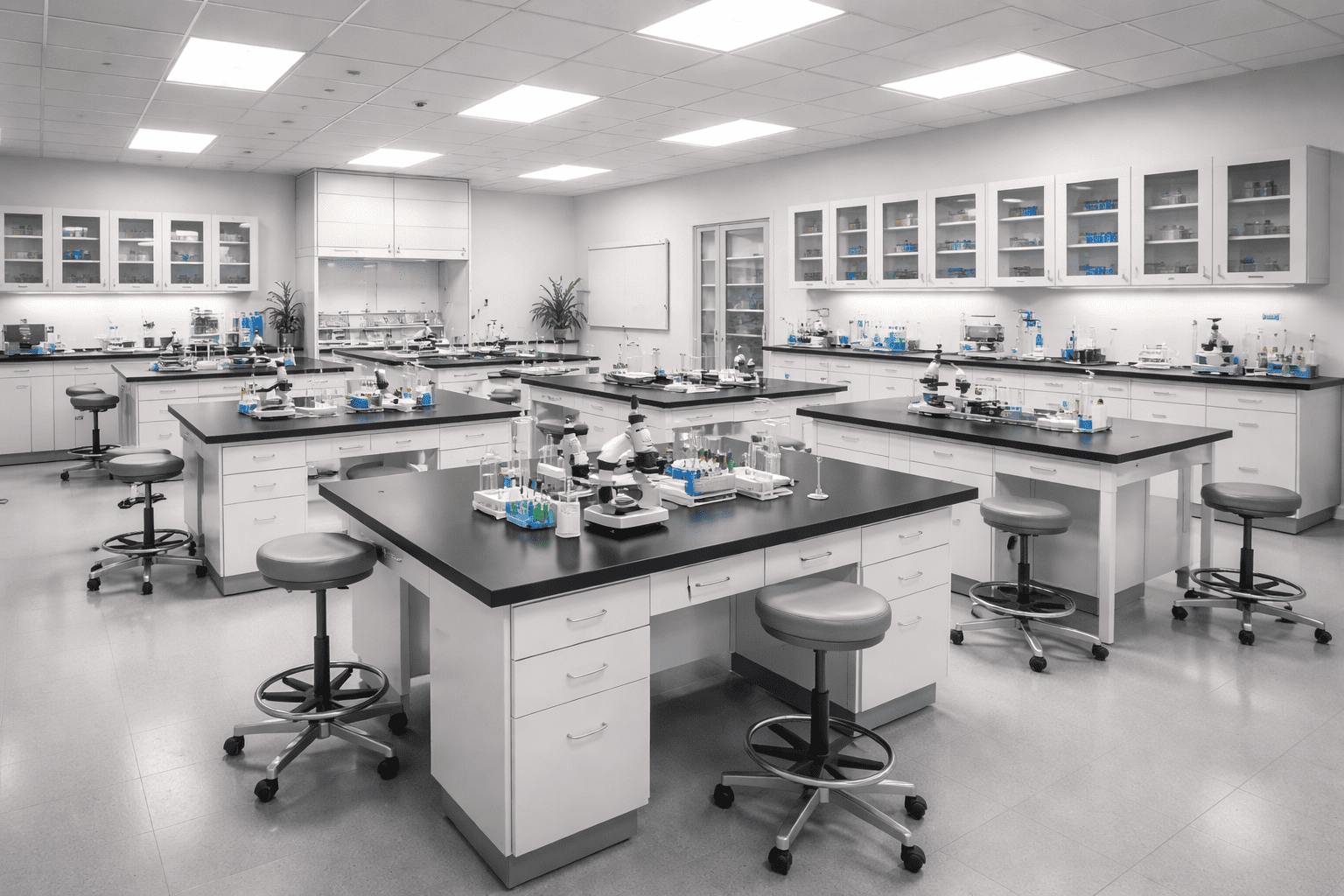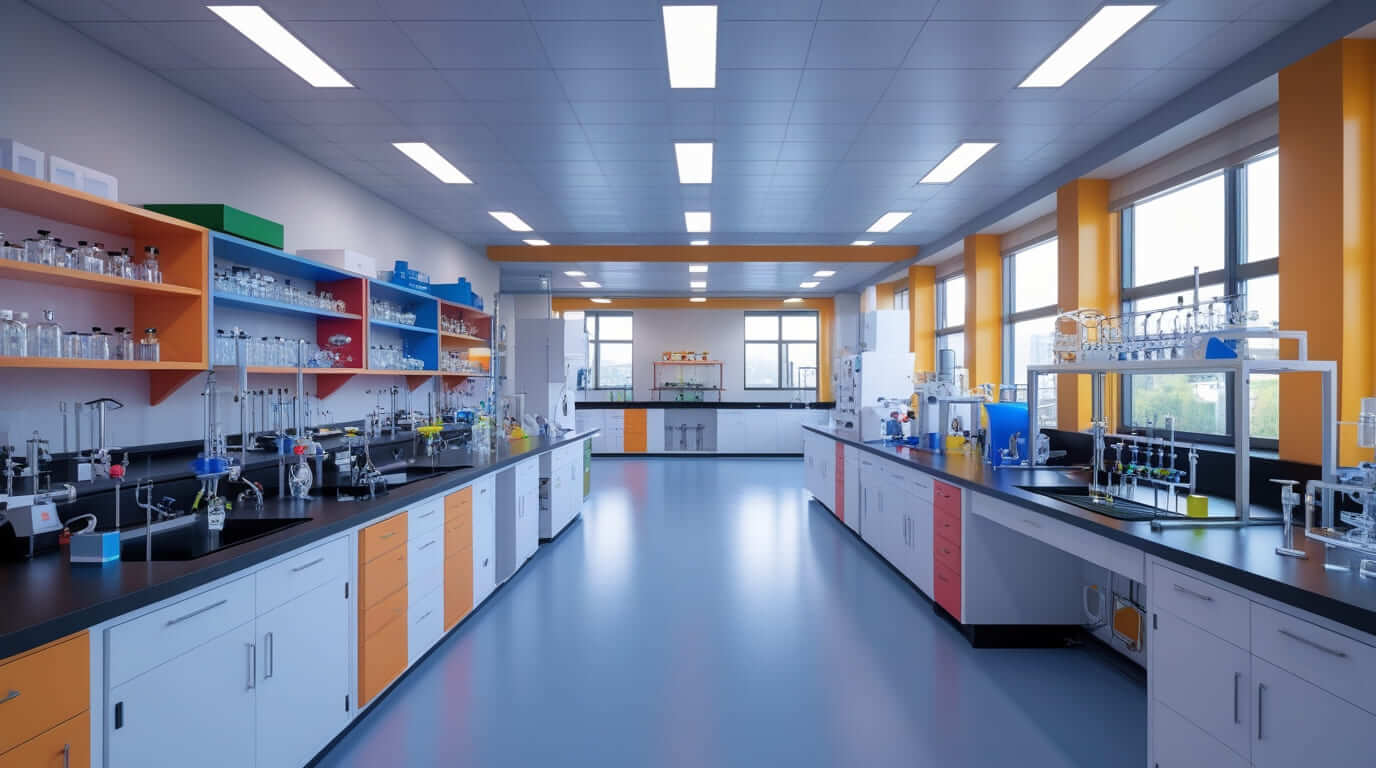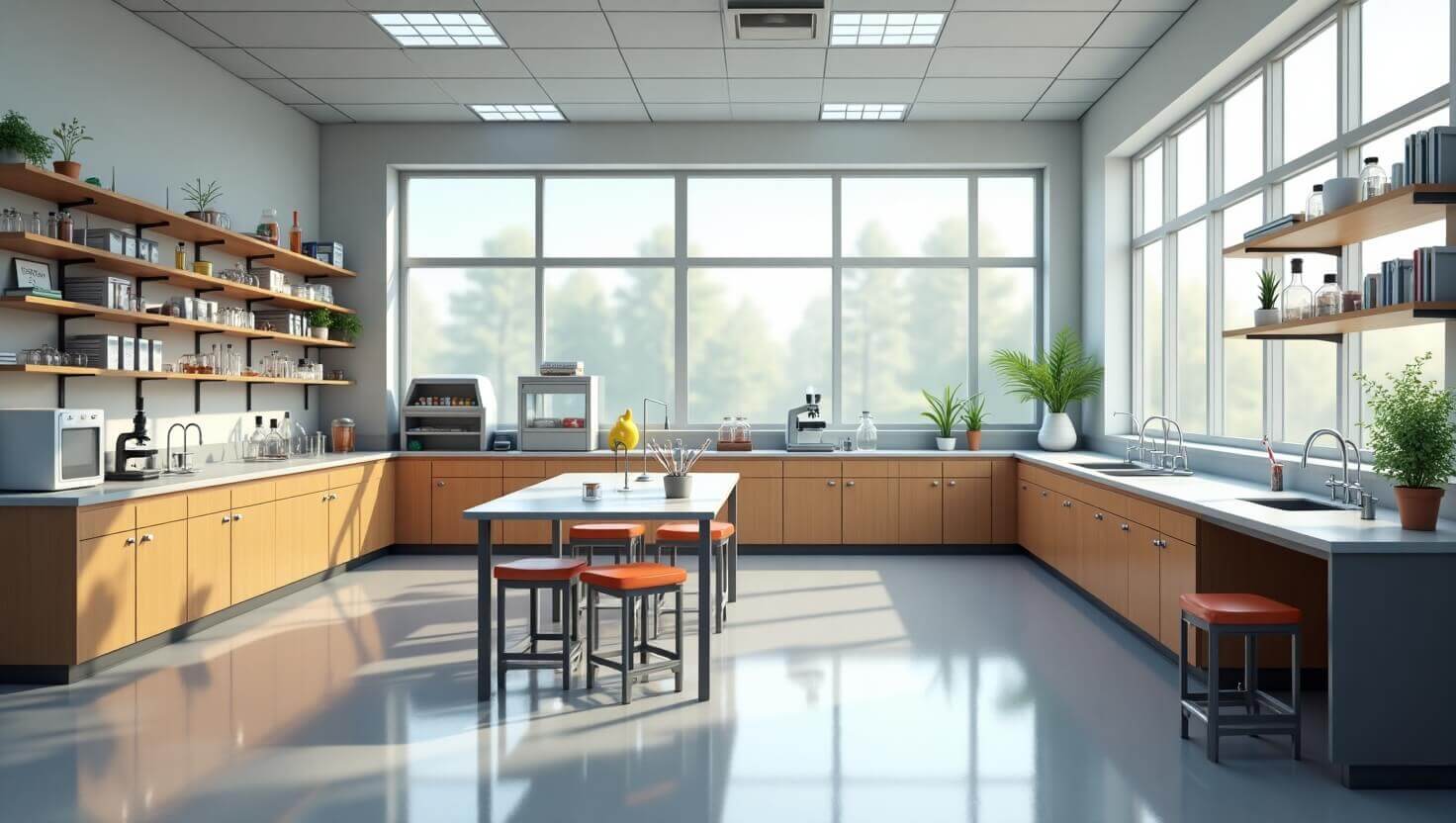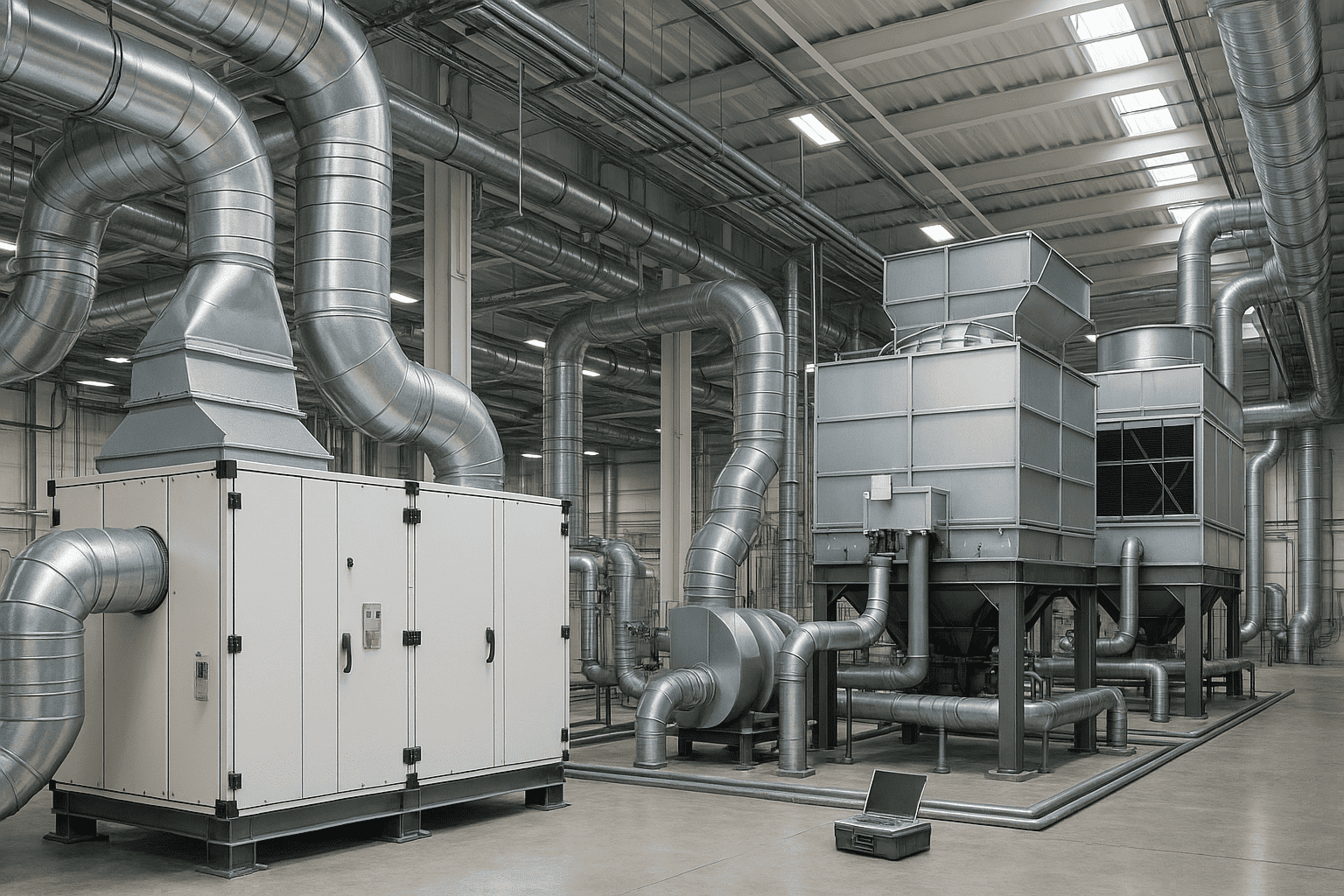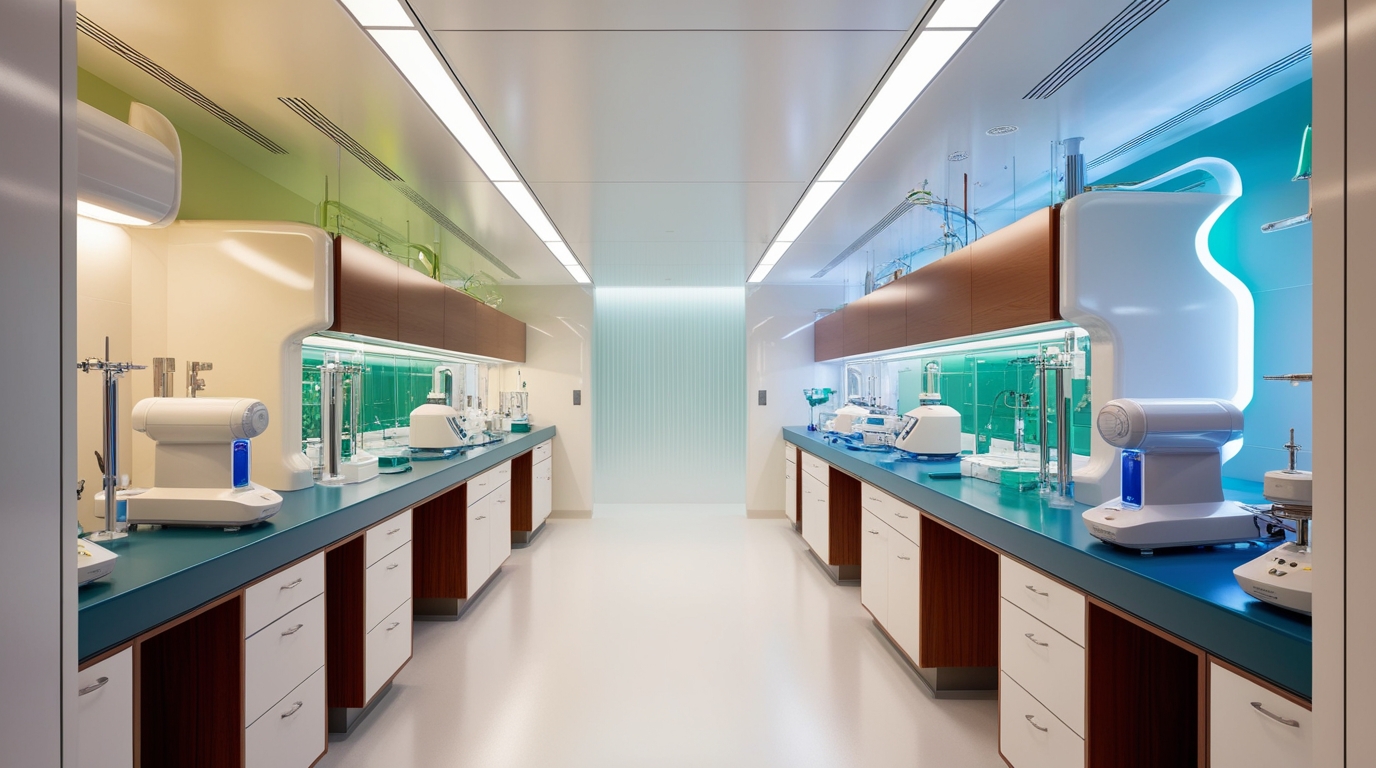
Setting up a new laboratory is an exciting yet challenging task that requires careful planning, attention to detail, and an understanding of your specific needs. Whether you’re establishing a lab for research, education, industrial testing, or clinical diagnostics, a well-planned laboratory setup ensures safety, efficiency, and long-term functionality.
Here are the key factors you should consider when planning a lab setup:
1- Define the Purpose and Scope
The first and most important step in any : Laboratory setup is clearly defining the purpose of the lab. Are you setting up a chemical laboratory, a biological lab, a physics lab, or a multi-disciplinary facility? Will it serve academic, research, industrial, or medical purposes?
Understanding your lab’s primary function helps you decide:
- The type of equipment needed
- The layout and design requirements
- Safety protocols
- Staffing and training needs
2- Space Planning and Layout
The physical layout is a critical element of your lab setup. You must ensure adequate space for workstations, storage, utilities, and movement. A good layout minimizes cross-contamination, promotes smooth workflow, and ensures the safety of personnel.
Key tips for space planning include:
- Separate clean and contaminated zones
- Ensure ergonomic design for benches and equipment
- Leave enough space for future expansion or modifications
- Follow standard guidelines for spacing between equipment and pathways
3- Safety First
Safety is non-negotiable in any laboratory setup. From fire protection systems to fume hoods and emergency exits, your lab must comply with all local and international safety standards.
Essential safety components include:
- Chemical-resistant flooring and furniture
- Proper ventilation systems
- Fire alarms and extinguishers
- Emergency eye wash and shower stations
- Clear signage and safety manuals
Additionally, every staff member should be trained in safety protocols and emergency procedures.
4- Utilities and Infrastructure
No lab setup is complete without a robust infrastructure to support utilities such as electricity, water, gas lines, and waste disposal. The design must include:
- Multiple electrical outlets for equipment
- Proper plumbing and drainage systems
- Compressed air and vacuum lines if required
- Data and communication cabling
- HVAC systems to maintain environmental control
Backup systems for power and data can help prevent operational interruptions.
5- Quality Lab Furniture and Equipment
The selection of laboratory furniture and equipment plays a vital role in your laboratory setup. High-quality, durable furniture ensures longevity and ease of use. Depending on your lab’s function, you may need:
- Lab benches and workstations
- Fume hoods and biosafety cabinets
- Storage units for chemicals and glassware
- Specialized lab instruments and tools
Ensure all equipment is compatible with your lab’s technical needs and space availability.
6- Regulatory Compliance and Accreditation
Every lab setup must adhere to relevant regulatory standards, which may include ISO certifications, NABL accreditation (for Indian labs), or GLP/GMP standards, depending on the industry. Compliance ensures:
- High-quality output
- Safe working environment
- Credibility with clients and regulatory bodies
Engage with consultants or experts if needed to ensure full compliance.
7- Workflow and Process Optimization
A good laboratory setup must support efficient workflows. Carefully consider how samples and personnel will move through the lab. Design workstations to reduce unnecessary steps, and group equipment based on functions (wet lab, dry lab, clean area, etc.).
Using digital lab management systems can also help streamline operations, recordkeeping, and reporting.
8- Budgeting and Future Scalability
While budgeting for your lab setup, account for not just construction and initial equipment, but also ongoing operational costs like maintenance, consumables, and utilities. Always plan for scalability — your lab should be flexible enough to accommodate future expansion, additional equipment, or new research directions.
Conclusion
A successful laboratory setup goes beyond buying equipment and arranging benches. It requires strategic planning, adherence to safety and regulatory guidelines, and a clear vision for future growth. Whether you’re starting a lab from scratch or upgrading an existing facility, investing in a smart, scalable lab setup will ensure efficiency, safety, and performance in the long run.

